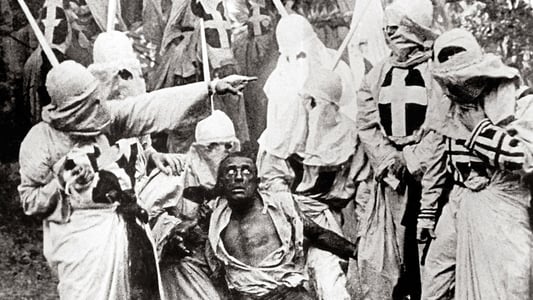The Birth of a Nation (1915)
The Birth of a Nation (1915)
D.W. Griffith's The Birth of a Nation is a silent epic that intertwines the lives of two families during the American Civil War and Reconstruction: the Northern abolitionist Stonemans and the Southern landowning Camerons. The story begins with a depiction of the Civil War, showing the lives of both families as they navigate the upheaval of the time. Ben Cameron, a Confederate soldier, becomes enamored with Elsie Stoneman, the daughter of a Northern congressman. Their budding romance is complicated by the war's political and personal repercussions.
In the second half, the focus shifts to the Reconstruction era, portraying the South under Northern occupation. The film controversially depicts African Americans (mostly played by white actors in blackface) as villains and caricatures, while elevating the Ku Klux Klan as saviors of the Southern way of life. Ben Cameron forms the Klan to combat what the film frames as corruption and disorder brought by freed African Americans and Northern carpetbaggers.
Review
The Birth of a Nation is a landmark in cinematic history, celebrated for its technical innovations yet condemned for its overt racism and propagandistic agenda.
Achievements:
- Technical Pioneering: Griffith introduced groundbreaking techniques such as cross-cutting, close-ups, and large-scale battle sequences. The film's scope, innovative narrative structure, and visual storytelling set new standards for filmmaking and established cinema as a powerful art form.
- Cinematic Impact: It was the first film screened at the White House and became one of the highest-grossing films of its time, cementing cinema's role in shaping public discourse.
Controversy:
- Racist Themes: The film's depiction of African Americans and glorification of the Ku Klux Klan are deeply troubling. It perpetuates harmful stereotypes and revisionist history, portraying Black people as threats to social order and the Klan as heroic protectors.
- Cultural Backlash: While the film was popular among white audiences of the era, it faced immediate criticism from civil rights groups like the NAACP, who protested its screenings and condemned its blatant racism.
Legacy:
The Birth of a Nation is a double-edged sword in film history. On one hand, it demonstrated the artistic and emotional potential of cinema. On the other, it exemplified how films could propagate dangerous ideologies, reinforcing systemic racism and historical distortion. Modern audiences and scholars approach the film as an artifact to study both the evolution of cinema and the impact of racist narratives in popular culture.
While influential, it is vital to watch The Birth of a Nation critically, acknowledging its contributions to cinema while understanding and rejecting its deeply problematic content.

Comments
Post a Comment